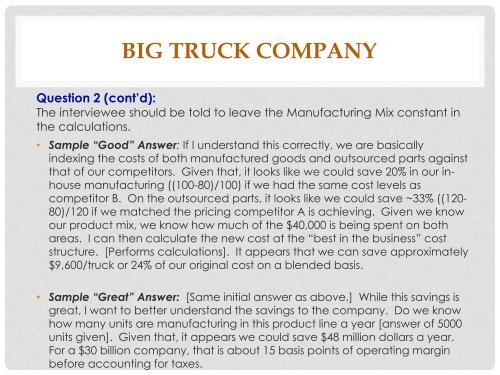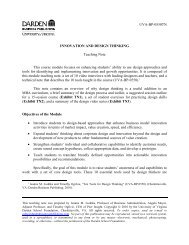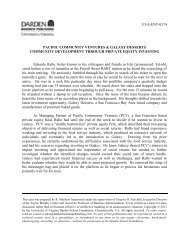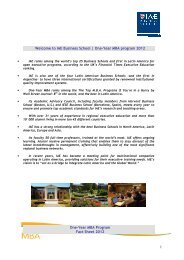Darden Case Book - Darden School of Business
Darden Case Book - Darden School of Business
Darden Case Book - Darden School of Business
You also want an ePaper? Increase the reach of your titles
YUMPU automatically turns print PDFs into web optimized ePapers that Google loves.
BIG TRUCK COMPANY<br />
Question 2 (cont’d):<br />
The interviewee should be told to leave the Manufacturing Mix constant in<br />
the calculations.<br />
• Sample “Good” Answer: If I understand this correctly, we are basically<br />
indexing the costs <strong>of</strong> both manufactured goods and outsourced parts against<br />
that <strong>of</strong> our competitors. Given that, it looks like we could save 20% in our inhouse<br />
manufacturing ((100-80)/100) if we had the same cost levels as<br />
competitor B. On the outsourced parts, it looks like we could save ~33% ((120-<br />
80)/120 if we matched the pricing competitor A is achieving. Given we know<br />
our product mix, we know how much <strong>of</strong> the $40,000 is being spent on both<br />
areas. I can then calculate the new cost at the “best in the business” cost<br />
structure. [Performs calculations]. It appears that we can save approximately<br />
$9,600/truck or 24% <strong>of</strong> our original cost on a blended basis.<br />
• Sample “Great” Answer: [Same initial answer as above.] While this savings is<br />
great, I want to better understand the savings to the company. Do we know<br />
how many units are manufacturing in this product line a year [answer <strong>of</strong> 5000<br />
units given]. Given that, it appears we could save $48 million dollars a year.<br />
For a $30 billion company, that is about 15 basis points <strong>of</strong> operating margin<br />
before accounting for taxes.








